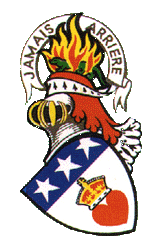The Bambatha Rifles (formerly the Witwatersrand Rifles)
is a reserve mechanised infantry regiment of the South African Army.
Proud of their Scottish heritage, they wear Douglas tartan.
Origin
The Witwatersrand Rifles (often familiarly known as the
"Wits Rifles or the Wit Rifles") was formed by proclamation on 1 May
1903 and absorbed the members of the Railway Pioneer Regiment and the
Rand Rifles, both of which had fought on the British side during the
Second Anglo-Boer War of 1899 – 1902.
As befitted a regiment
based from the gold-rich Witwatersrand region, it had a very close
relationship with the mining establishment of the time; and its cap
badge further emphasised this link.
Bambatha Rebellion
The
regiment first saw action during the Bambata Rebellion of 1906, when it
deployed a contingent to (the then) Zululand.
Absorption of the
Transvaal Light Infantry
Transvaal Light Infantry insignia
In
1907 the regiment was further strengthened when it absorbed the
Transvaal Light Infantry Regiment.
World War 1
The regiment
was mobilised again when World War I broke out.
German South West
Africa
The first action that it took part in was the South African
invasion of German South-West Africa (now Namibia).
After the
successful conclusion of this campaign, virtually all members
volunteered for overseas service.
Western Front
Most of the
volunteers were consequently assigned to the 3rd South African Infantry
Battalion. (Due to the South African military law of the time, soldiers
could not be forced to serve overseas, nor could existing military units
be deployed there.) The most well-known action that this unit took part
in was the Battle of Delville Wood in the Somme.
East Africa
Other members of the regiment served in the Witwatersrand Rifles company
of 7th Infantry ACF, which served in German East Africa against the
forces of General von Lettow-Vorbeck.
Rand Revolt
The
inter-war years saw the regiment deployed during the 1922 Rand Revolt,
when rebellious South African Communist Party miners attempted to
overthrow the government of General Jan Smuts.
In the early 1930s
the regiment affiliated with the Cameronians (Scottish Rifles) Regiment
of the British Army. As a consequence, the Witwatersrand Rifles adopted
the uniform and many of the traditions of this Scottish Lowland
regiment. Despite the Cameronians' disbandment in 1968, the Wits Rifles
still continues this heritage today.
World War 2
As a result
of the outbreak of World War II in 1939, the regiment was expanded to
two battalions. However, due to the battalions being used to supply
replacements in a piecemeal fashion to depleted South African units
taking part in the North African campaign, the Witwatersrand Rifles was
only deployed as a coherent unit (to Egypt) in 1943.
During its
service in North Africa, the Witwatersrand Rifles was amalgamated with
Regiment de la Rey. This combined regiment, was nicknamed the "Royal
Boere" and saw extensive action in Italy as part of the South African
6th Armoured Division, particularly at Monte Caprara and Monte Stanco.
Border War
From 1970 until the first all-race democratic
elections in 1994, the regiment saw action in the South African Border
War in South-West Africa (now Namibia) and Angola as well as on the
South Africa/Botswana border and in South African townships.
Post
1994
When conscription ended in 1993, the regiment began an active
recruitment drive to maintain reserve troop strength. During South
Africa's second democratic election in 1999, the regiment deployed 180
volunteers in support of the South African Police Service (SAPS).
Late in its history the Witwatersrand Rifles Regiment attracted
volunteers for regular part-time training.
Scottish tradition
To maintain its Scottish links, the regiment had formed alliances with
the Cameronians (Scottish Rifles) and the King's Own Scottish Borderers
(now amalgamated into the Royal Scots Borderers). Up to the disbandment
and name change, members of the regiment continued to maintain their
traditional Scottish Lowland uniforms and traditions and uphold very
high standards of discipline and effective military training. The
Witwatersrand Rifles are affiliated to the
Perth Regiment of Canada, who also wear Douglas tartan.
The
regiment also had an active pipe band as well as one of the top shooting
teams in the country and was ably supported by a Regimental Council, a
very active Regimental Association and a Ladies Committee up to the
point of the renaming process.
Peacekeeping
The Witwatersrand
Rifles Regiment provided troops for internal operations in support of
the South African Police Service and on the border (as part of Operation
Corona) as well as for United Nations peacekeeping operations in the DRC
and the Sudan.
Name Change
In August 2019, 52 Reserve Force
units had their names changed to reflect the diverse military history of
South Africa. The Witwatersrand Rifles became the Bambatha Rifles, and
have 3 years to design and implement new regimental insignia.
|


